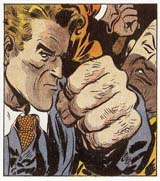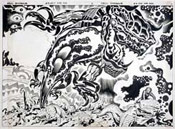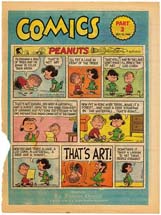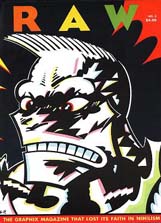Masters of American Comics
Baker/Rowland Exhibition Galleries
Masters of American Comics is the first art museum exhibition to examine comic strips and books on this expansive scale. Each artist is represented by in-depth groupings presented as a series of individual retrospectives featuring a range of each artist’s works from conceptual sketches and finished drawings to printer’s proofs, tear sheets, printed newspapers, comic books and graphic novels. The exhibition layout highlights individual contributions of the artists and the ways in which they reinvented the medium to significantly influence their peers and subsequent generations.
The exhibition is organized chronologically, beginning in the early 20th century with American newspaper comic strips through the influential work of such pioneering comic artists as Winsor McCay (Little Nemo in Slumberland) and George Herriman (Krazy Kat), who set the stage by defining the formal attributes of the genre in the early 1900s. Focusing on the great achievements of this new art form through the century’s first decades, the exhibition also includes the groundbreaking work of Lyonel Feininger (The Kin-der-Kids and Wee Willie Winkie’s World), E.C. Segar (Thimble Theatre), Frank King (Gasoline Alley), Chester Gould (Dick Tracy), Milton Caniff (Terry and the Pirates), and Charles M. Schulz (Peanuts).
The exhibition continues with the early Golden Age to the rise of the independent comics movement. Comic books began as a form in which newspaper comics were reprinted and, with the rise of such series as Will Eisner’s The Spirit and Jack Kirby’s Captain America and Fantastic Four, became the dominant popular medium for narrative illustration. In addition to Kirby, particular attention is also paid to Harvey Kurtzman, whose MAD Magazine transformed the medium into one capable of great artistic expression and social commentary beginning in the early 1950s. By the mid-1960s, R. Crumb’s work in Zap Comix added a new level of personal expression and extended the significant role of independent and underground comic books and graphic novels. This medium continues to evolve today through the innovations of such artists as Art Spiegelman (Maus and In the Shadow of No Towers), Gary Panter (Jimbo), and Chris Ware (Jimmy Corrigan: The Smartest Kid on Earth).
- Jack Kirby, Devil Dinosaur #4, 1978. Pen and ink draing. Collection of Glen David Gold. Devil Dinosaur is a copyright and trademark of 2005 Marvel Characters, Inc. Used with permission. Photo by Robert Wedemeyer.
- Charles M. Schulz, Peanuts, October 13, 1968. Newspaper Sunday page. Charles M. Schulz Museum and Research Center. Photo by Tom Van Eynde. Copyright United Feature Syndicate, Inc.
- Milton Caniff, Steve Canyon, January 26, 1947. Newspaper Sunday page. Reproduced with permission of the Milton Caniff Estate.
- Gary Panter, RAW No.3, 1981. Printed magazine cover. Collection of Art Spiegelman. Reproduced with permission of the artist and Pantheon Publishers. Photo by Robert Wedemeyer.




